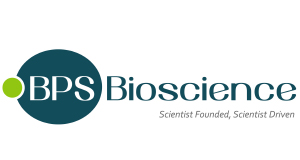ZsGreen/Luciferase Safe-Harbor HEK293 Cell Line
ZsGreen/Luciferase Safe-Harbor HEK293 Cell Line
Artikelnummer
BPS82091
Verpackungseinheit
2 vials
Hersteller
BPS Bioscience
Verfügbarkeit:
wird geladen...
Preis wird geladen...
Products from BPS Bioscience require a minimum order value above 400€
Application: Use as a control in cell-based assays.Use as base cell line model for further genetic modifications of interest.
Background: AAVS1 (also known as the PPP1R12C locus) on human chromosome 19 is a well-validated "safe harbor" site for hosting DNA transgenes. AAVS1 has an open chromatin structure and is transcription competent. Most importantly, disrupting the AAVS1 locus by inserting DNA transgenes using CRISPR/Cas9 has no known adverse effects on the cells. Specifically targeting the AAVS1 locus is a major advantage compared to the random integration obtained using other approaches such as lentivirus infection or cell transfection, which may cause insertional mutagenesis or disrupt important genes or cellular processes. The generation of a cell line containing both a fluorescent marker and luciferase allows for easy read outs in multiple assay types, ranging from in vitro to in vivo applications.
Description: Recombinant stable HEK293 cell line constitutively expressing ZsGreen (bright green fluorescent protein derived from Zoanthus sp. reef coral) and firefly luciferase, which have been stably integrated into the AAVS1 safe harbor locus on chromosome 19 using CRISPR/Cas9. Expression of ZsGreen and the luciferase reporter are driven by a EF1A promoter. Cells were selected by limiting dilution to obtain a monoclonal population. The lack of random integration of ZsGreen/luciferase into the HEK293 genome guarantees this cell line behaves like parental HEK293 cells.
Host Cell Line: HEK293
Mycoplasma Testing: The cell line has been screened to confirm the absence of Mycoplasma species.
Storage Stability: Cells are shipped in dry ice and should immediately be thawed or stored in liquid nitrogen upon receipt. Do not use a -80°C freezer for long term storage.
Supplied As: Each vial contains >1 x 106 cells in 1 ml of Cell Freezing Medium (BPS Bioscience #79796)
Warnings: Avoid freeze/thaw cycles
Biosafety Level: BSL-2
Application: Use as a control in cell-based assays.Use as base cell line model for further genetic modifications of interest.
Background: AAVS1 (also known as the PPP1R12C locus) on human chromosome 19 is a well-validated "safe harbor" site for hosting DNA transgenes. AAVS1 has an open chromatin structure and is transcription competent. Most importantly, disrupting the AAVS1 locus by inserting DNA transgenes using CRISPR/Cas9 has no known adverse effects on the cells. Specifically targeting the AAVS1 locus is a major advantage compared to the random integration obtained using other approaches such as lentivirus infection or cell transfection, which may cause insertional mutagenesis or disrupt important genes or cellular processes. The generation of a cell line containing both a fluorescent marker and luciferase allows for easy read outs in multiple assay types, ranging from in vitro to in vivo applications.
Description: Recombinant stable HEK293 cell line constitutively expressing ZsGreen (bright green fluorescent protein derived from Zoanthus sp. reef coral) and firefly luciferase, which have been stably integrated into the AAVS1 safe harbor locus on chromosome 19 using CRISPR/Cas9. Expression of ZsGreen and the luciferase reporter are driven by a EF1A promoter. Cells were selected by limiting dilution to obtain a monoclonal population. The lack of random integration of ZsGreen/luciferase into the HEK293 genome guarantees this cell line behaves like parental HEK293 cells.
Host Cell Line: HEK293
Mycoplasma Testing: The cell line has been screened to confirm the absence of Mycoplasma species.
Storage Stability: Cells are shipped in dry ice and should immediately be thawed or stored in liquid nitrogen upon receipt. Do not use a -80°C freezer for long term storage.
Supplied As: Each vial contains >1 x 106 cells in 1 ml of Cell Freezing Medium (BPS Bioscience #79796)
Warnings: Avoid freeze/thaw cycles
Biosafety Level: BSL-2
| Artikelnummer | BPS82091 |
|---|---|
| Hersteller | BPS Bioscience |
| Hersteller Artikelnummer | 82091 |
| Verpackungseinheit | 2 vials |
| Mengeneinheit | PAK |
| Wirt | Human |
| Produktinformation (PDF) | Download |
| MSDS (PDF) |
|

 English
English






